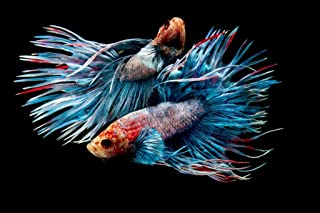
So, you’ve done your homework, splurged on some spectacular fish and corals, and now they’re finally here! But before you toss them into your tank and hope for the best, let’s talk acclimation. It’s a crucial step to ensure your new aquatic friends feel right at home.
Why Acclimation Matters
Acclimation helps your new arrivals adjust to differences in temperature, pH, and salinity between their transport water and your aquarium. Fish and invertebrates (especially corals) are super sensitive to even slight changes, so rushing this process is a big no-no.
Also Read:
Acclimation Methods
The Floating Acclimation Method
- Turn Off the Lights: Dim the room lights too. Bright lights can stress your new friends out.
- Float the Bag: Keep the bag sealed and let it float in your tank for 15 minutes. This gradually matches the water temperatures.
- Open and Float: Cut open the bag, roll down the top to create an air pocket, and let it float.
- Add Water Gradually: Add 1/2 cup of tank water to the bag every four minutes until full.
- Discard Some Water: Empty half the water from the bag.
- Repeat Water Addition: Add 1/2 cup of tank water every four minutes until the bag is full again.
- Release and Enjoy: Gently net your new arrivals from the bag into the tank. Discard the bag water – don’t dump it into your tank!
The Drip Acclimation Method
This one’s for the pros and those sensitive types like corals and shrimps.
- Start with Steps 1-3 of Floating Method: This matches the temperature.
- Prepare Buckets: Empty the contents of the bags into clean buckets, keeping the critters submerged.
- Set Up a Drip Line: Use airline tubing to create a drip line from your tank to the bucket. Adjust to 2-4 drips per second.
- Double the Water Volume: When the bucket volume doubles, discard half and repeat until it doubles again.
- Transfer Carefully: Move the specimens to your tank without exposing them to air. Discard the water in the bucket.
Important Tips
- Be Patient: The whole process should take about an hour.
- Keep the Lights Off: Leave the tank lights off for at least four hours after adding your new friends.
- Handle With Care: Sponges, clams, and gorgonias should never be exposed to air.
- Avoid Airstones: Don’t use them in the shipping bag; it can spike the pH and ammonia levels.
- Monitor Specific Gravity: For invertebrates, keep it between 1.023-1.025.
Troubleshooting Common Issues
When New Arrivals Seem “Dead”
Sometimes fish and invertebrates can look lifeless on arrival. Stick to the acclimation process; they often revive with proper acclimation.
Aggressive Tank Mates
Newcomers can face harassment from established residents. Here’s what you can do:
- Temporary Containment: Use a plastic spaghetti strainer to float the aggressive fish for a few hours.
- Divide and Conquer: Use a perforated plastic grid to section off part of the tank, giving the newbie time to adjust.
Special Considerations for Corals
Some corals might produce slime during shipping. After acclimation, gently shake the coral in the shipping water before placing it in your tank. Remember, never touch the fleshy parts of live corals.
Conclusion
Floating or drip Acclimation is your best bet for ensuring your new fish and corals thrive in their new home. It might take a bit of time and patience, but trust us, it’s worth it. Follow these steps, and you’ll have a vibrant, healthy aquarium in no time. Happy fish-keeping!



















Add comment